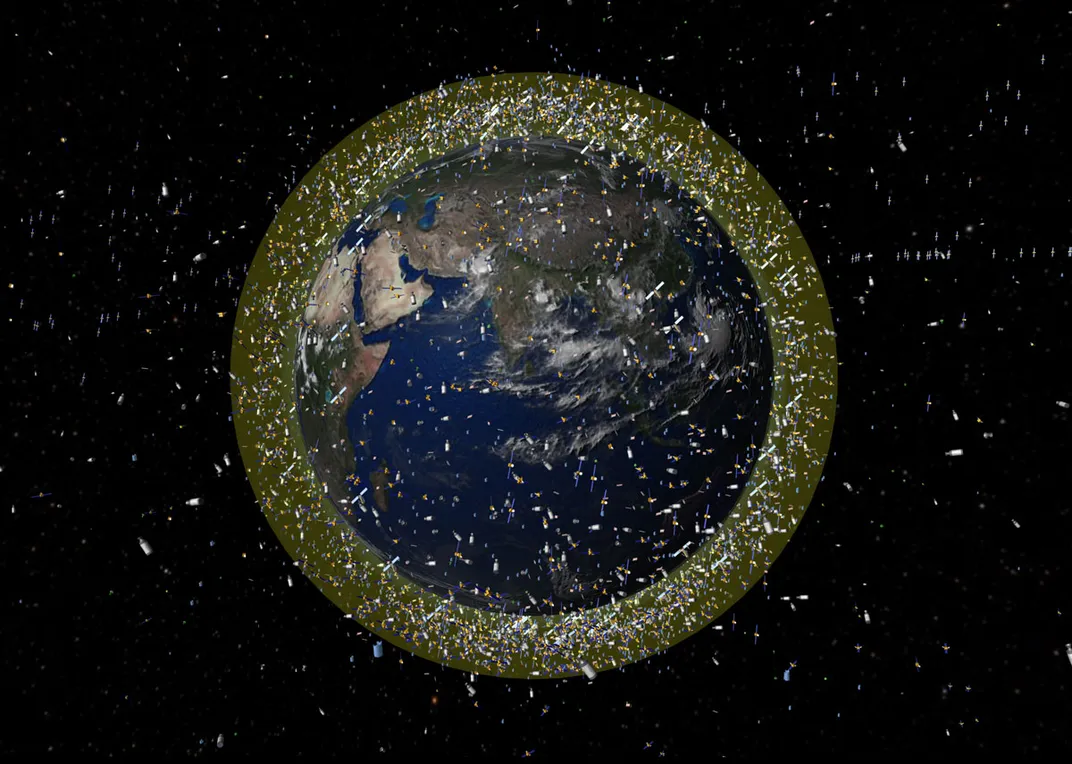The World’s First Solar-Powered Satellite is Still Up There After More Than 60 Years
This tiny grapefruit-sized satellite will still be up there well into the 2100s if we don’t take it down
/https://tf-cmsv2-smithsonianmag-media.s3.amazonaws.com/filer/67/c7/67c705bf-2557-4f0e-bee7-b981f579431c/vanguardtv3.jpg)
In its day, the Vanguard 1 was cutting-edge. Now it’s just another piece of space junk.
The satellite, which is only 6.4 inches in diameter and 3.5 pounds, was the first solar-powered satellite to be sent into space, on this day in 1958. It transmitted information from 1957 to 1964, and it’s been up there ever since, silent. If we don’t get it down somehow, it will be up there for a long time to come.
Solar power was a brand-new technology at this point, writes UC Santa Barbara. Bell Laboratories had announced the invention of the silicon solar cell only four years earlier. The technology immediately caught the interest of the military, who had been discussing putting up a new artificial satellite.
The first satellite, Sputnik 1, had been launched by the Soviet Union in 1957. The first American satellite followed in 1958, but Vanguard 1, the first to be powered by solar energy, represented a significant innovation. Its solar cells meant that it could transmit information for years, rather than the days that a battery held power. “Vanguard I achieved the highest altitude of any man-made vehicle to that time and established beyond doubt geologists’ suspicions that the Earth is pear shaped,” writes the U.S. Naval Research Laboratory, which constructed the satellite. Vanguard 1 also allowed mapmakers to more accurately place the South Pacific islands and proved that solar cells were viable for the space program.
But despite its illustrious career, after Vanguard 1 ceased transmitting in 1964 it became one of the first artifacts in what has since become a veritable halo of anthropogenic space junk in Earth’s low orbit. The early satellite launches like Vanguard inspired the public imagination, writes Nola Taylor Redd for Space.com, but in typical 1950s fashion, satellite designers didn’t give thought to the environmental impacts of their actions.

According to the European Space Agency, which runs a space debris program, more than 4,900 space launches have taken place since 1957, sending out more than 18,000 objects that are currently being tracked in space. The ESA estimates that there are as many as 700,000 objects larger than 1 centimeter up there.
Only 1,100 of those objects are working spacecraft: many others are fragments of once-larger space missions left to break up. The imperative to prevent further space waste and clean up what’s there as much as possible isn’t just environmentalism for its own sake: most space junk is moving so quickly, even a centimeter-sized piece could have catastrophic impacts on working spacecraft.
The Vanguard I is the oldest piece of debris still up there today.